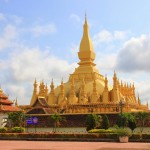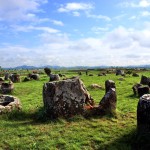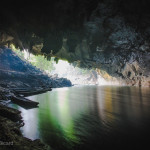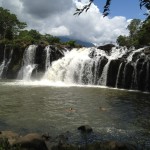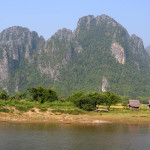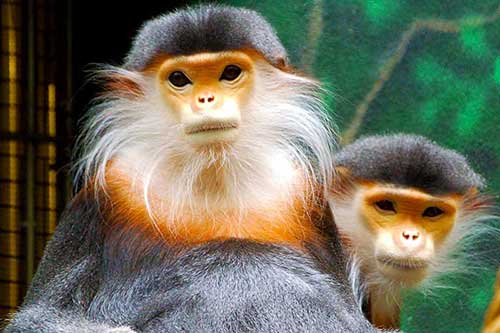
FLORA & FAUNA
Laos has one of the most pristine natural landscapes in Southeast Asia. An estimated half of its woodlands consist of primary forest, in particular the tropical rainforest. Unlike the vegetation that grows in the climate of Europe and the United States, tropical rainforest is composed of three vegetative layers. The top layer features single-trucked, high-reaching trees called dipterocarps. The middle canopy consists of hardwood such as teak. Beneath, small trees, grass and sometimes bamboo can be found.
In addition to its fascinating vegetation, Laos plays host to a diverse animal kingdom. Several exotic mammals are endemic such as leopard cats, Javan mongoose, goat antelopes as well as rare species of gibbons and linger, Malayan sun bear, Asiatic black bear and gaur. The discovery of the Saola Ox, a breed of deer-antelope, in Vietnam a few years ago caused a great sensation. This extremely rare animal inhabits the Eastern border regions of Laos. It is thought that these remote areas probably still hide other unknown species.
In Southern Laos, near Khong Island, Irrawaddy dolphins inhabit the Mekong River. While many species of wildlife are shy and can rarely be seen, spectators will generally be able to spot the dolphins in Springtime when the water level of the Mekong is lowest. Laos is also rich in resident and migrating birds. One of the more notable ones is the rare Green Peafowl.
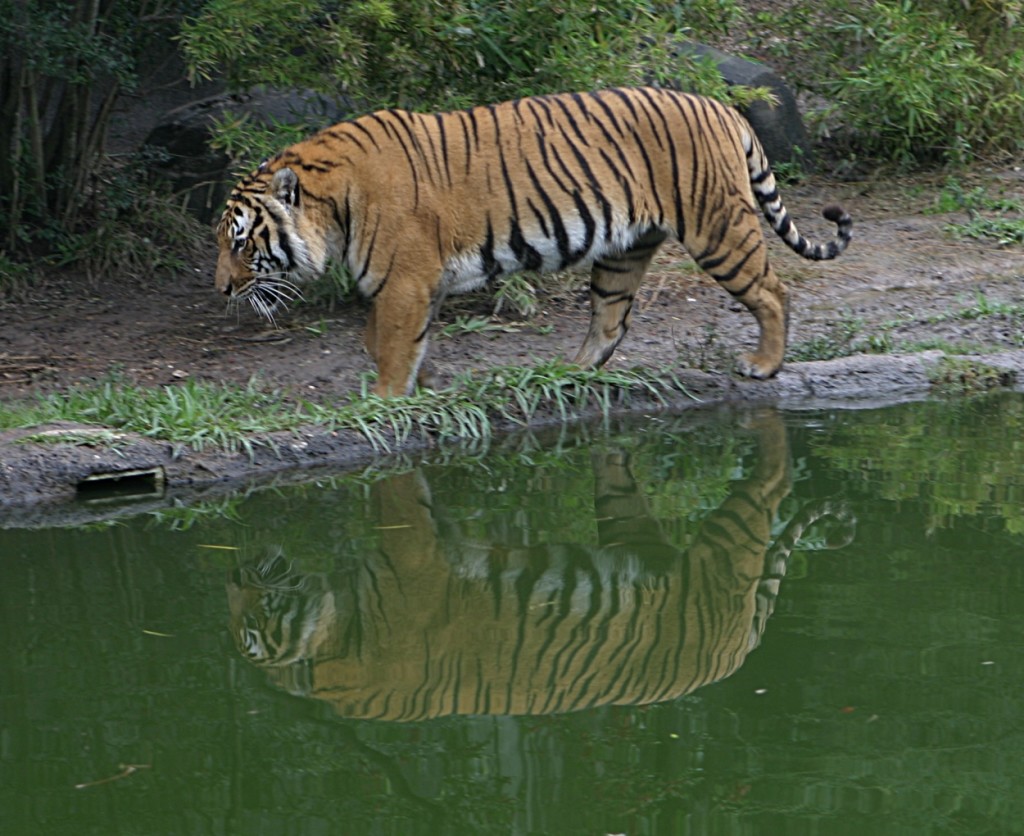
Laos is home to over one hundred species of large mammals. Many of these are familiar Asian species such as Tiger, Asian Elephant and Gaur (a species of wild cattle). Lao also holds an impressive diversity of primates including five species of gibbon, five species of macaque and four species of leaf monkey including the incredibly beautiful Douc Langur.
In recent years Lao has received international attention after the discovery of an incredible variety of species new to science. These recent discoveries include the Saola, a strange and beautiful forest dwelling antelope like creature, many small deer species known as muntjacs, a small striped rabbit and a completely new family of rodent known locally as the Kha-nyou that is closely related to porcupines.
In addition to mammals, Lao supports over 165 species of amphibians and reptiles including such impressive species as Rock and Burmese Pythons, King cobras and the large and noisy Tokay Gecko (Gekko gecko) a formidable resident of many Lao houses.
Opportunities to view this incredible diversity of wildlife are steadily growing. A long history of market and subsistence hunting has depressed many wildlife populations across the country. The increase in ecotourism and traveler’s interest in viewing wildlife now provides positive financial reinforcement for residents to conserve many of these species.
Laos does have some of the best to offer in the entire world in terms of wildlife and biodiversity. However, many wildlife species are threatened by illegal hunting and the illegal trade in wildlife and wildlife products. The Lao government takes these offenses very seriously and ask that you refrain from purchasing wildlife and wildlife products.
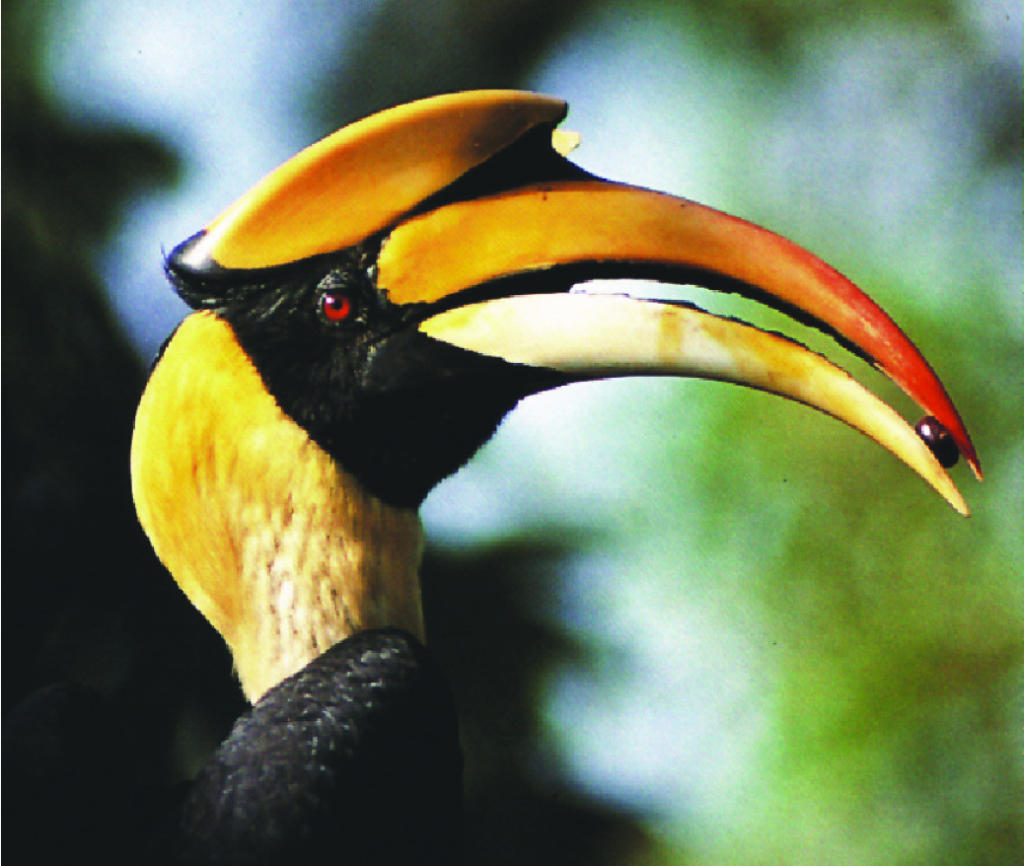
BIRDS
With over 700 species recorded to date and new species being added to the country list almost monthly, Laos is one of the most exciting and least known birding locations in the world. In recent years as the country has embraced ecotourism the opportunities are expanding rapidly for visitors to see a variety of beautiful and rare species.
The Northern Highlands of the country hold numerous species associated with Northern Thailand and the North Eastern Himalayas. A huge diversity of babblers as well as Blyth’s Kongfisher, Rufous-necked Hornbill, Beautiful Nuthatch, Short-tailed Parrotbill and Yellow-vented Warbler can be found in the forests of the north.
The Mekong Plain supports areas of dry deciduous forest inhabited by Rufous-winged Buzzards, Black-headed Woodpeckers and Small Minivets. Ban Sivilai is a community owned and operated bird conservation zone in this area.
The Mekong it self provides an important flyway for migratory shorebirds and waterfowl as well as localized sandbank species such as Small Pratincole, River Lapwing, Great Thick-knee and River Tern. The southern portion of the Mekong Plain along the Cambodian border is home to the incredibly rare White-shouldered and Giant ibis as well as small populations of White-rumped and Red-headed vultures, Lesser Adjutants, Sarus Cranes and White-winged Ducks. The most exciting discovery in the area in recent years has been the description of a new species to science, the Mekong Wagtail. This species was found, within the past decade, to live on sandbanks in the Mekong and a few of its tributaries in southern Lao and Cambodia.
Perhaps the most exciting area for birding in the country is along the Annamite Range that marks the border with Vietnam. In recent years many species once though to be found only in Vietnam have been discovered in Lao. Species such as Short-tailed Scimitar Babbler, Yellow-billed Nuthatch and the recently described Black-crowned Barwing are all readily found. Slightly more widespread species include White-winged and Indochinese Green Magpies as well as the shy and difficult to see Crested Argus and Blue-naped Pitta.
Another area worthy of mention is the impressive strip of karst limestone that divides the Mekong Plain from the Annamite Range in central Laos. This beautiful landscape is home to the enigmatic Sooty Babbler. Despite being locally common this species went unseen for decades until being “rediscovered” in the 1990’s.


